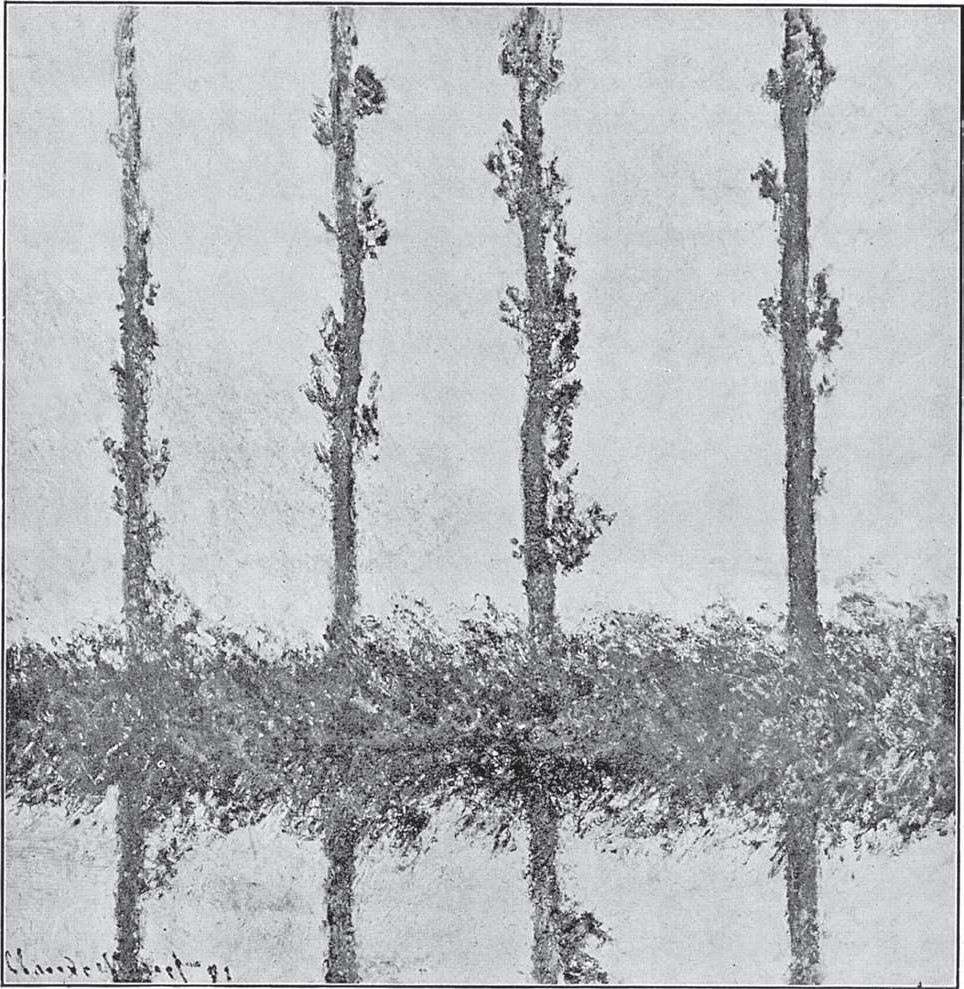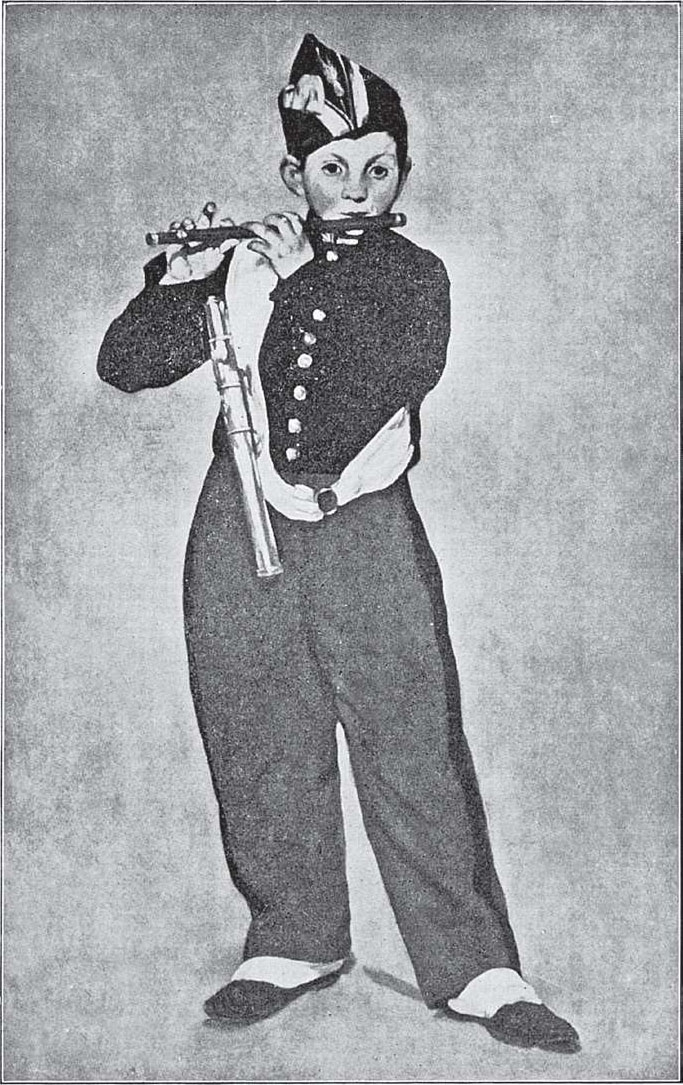





A ND now I’m going to have to blindfold you. I won’t ask you to look at some pictures blindfolded. You can enjoy music that way, but hardly pictures. But let’s suppose you really are blindfolded. I’m going to guide you, blindfolded as you are, out to a field this morning. I’m going to stand you so you are facing a haystack and then I’m going to take the handkerchief off your eyes and let you look at the haystack for five minutes. Then I’ll blindfold you again and lead you back. It’s a queer kind of a game, isn’t it? Something like blindman’s-buff.
Let’s play it once more. The first time when you looked at the haystack it was ten o’clock in the morning. This time I’ll let you look at the same haystack for five minutes about five o’clock in the afternoon. And this time the haystack will look quite different from the way it looked at ten. It’s the same shape, but the colors and light and shadows are all so different that the five o’clock haystack makes a picture to your eye very different from the ten o’clock haystack. Every little while during the day the haystack changes in color and brightness. That’s why I let you look at it for only five minutes at a time — so the light would not change and give your eye another picture.
Now, I’m sure you can see that if an artist painted a picture of the haystack for every hour of the day he would have many pictures of the same haystack, but each picture would be different from all the others.
That is just what some French artists did not so many years ago. Then they gave an exhibition of their work. They hung their paintings on the walls of a room so that people could come and see them. The people who came found these paintings were very different from any they had ever seen before. The pictures were like your quick view of the haystack. They showed the colors and light that the artists had seen in quick views of the things they were painting.These views were called impressions. And so the painters soon got the name of Impressionists.
Earlier painters never thought of doing such a thing. They painted a horse one color and a haystack another, no matter whether the light always made them look that color or not.Really a black horse or a yellow haystack is not always black or yellow. The color depends on the light. The light shining on a black horse may make him look blue in places. But you know so well that a horse isn’t blue that you don’t notice how blue he really may look in certain lights!
Painters always used to paint shadows brown or gray or black. But if you look carefully at a real shadow it is often not brown or gray or black at all. It’s just as apt to be green or blue or purple or some other color.
Of course bright light and color on an object out of doors was always hard to paint, because paints are not nearly so bright as light. But if you remember what I told you about the painter Constable, you will see how these Impressionist artists made their colors look bright and like sunlight. They put the colors on in little dots and dashes. Putting colors on in dots and dashes of separate colors does really make them look brighter. They almost seem to shimmer like real sunlight. But it also makes the pictures look quite different from the older kind of painting.
For this reason the people who saw the French exhibition of the Impressionists weren’t very much pleased. These people had been used to one kind of painting, and the change was so great that they couldn’t like the new kind nearly as well at first.

NO.26-1 THE

But after a while the Impressionists came to be understood better. People saw that they were trying out a new way of painting and that what they were doing might be very worth while. One of the Impressionists named Claude Monet (Monay) used to go out with a carriage full of canvases and spend all day painting the same scene. He used a different canvas each time the light changed the color and appearance of the thing he was painting.
For instance, Monet painted fifteen pictures of the same haystacks and in each one had a different color and light effect. He painted twenty pictures of the front of a French cathedral as it was seen at different times of day, and each picture was different. They make an interesting series, but when you see one of these pictures by itself you are apt to be a little disappointed because the forms, or the shapes, in the painting are not so important as you think they should be. Monet was interested in the light and color, not especially in the form or shape.
Another Impressionist had a name much like Monet. His name was Manet (Ma-nay). In fact,Manet was the painter who really started the Impressionists. Manet didn’t break his pictures up into so many little glittering spots as Monet did. Indeed, it was only in the last ten years of his life that Manet used that kind of painting very much. Some one asked Manet once who the chief person was in one of his Impressionist pictures.

NO.26-2 THE FIFER MANET
“The most important person in any picture,” Manet answered, “is the light.” And that was what the Impressionists tried to show in their paintings.
Here is one of Manet’s pictures called “The Fifer.”Probably you will like it better than Monet’s “The Poplars”because people are generally more interesting than things ,even if light is “the most important person” in a painting.